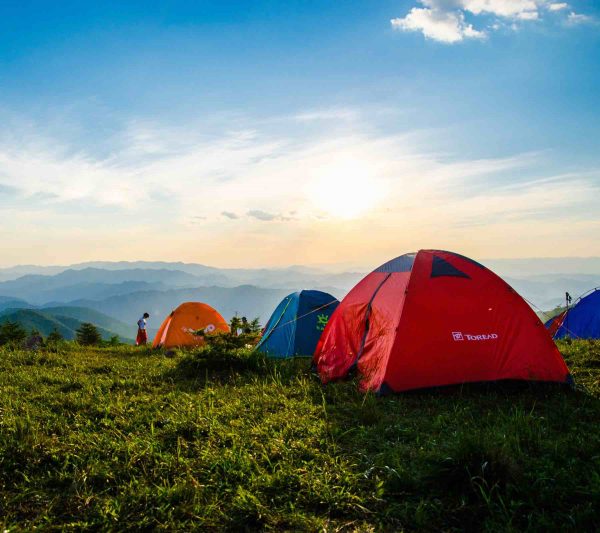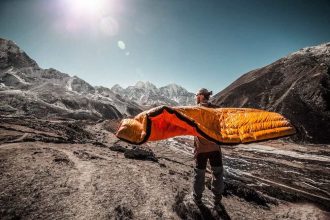The concepts of eco friendly camping are connected to the fundamental principles of “Leave No Trace” . These guidelines give a framework for visitors to the outdoors to limit their environmental impact.
The Eco Camping methodology allows you to have an extraordinary outdoor adventure while respecting the delicate equilibrium of nature.
What is Eco Camping?
The term “eco camping” refers to ecologically responsible camping. This includes where you go, what you do, and how you leave the campsite when you are finished. Eco camping is also referred to as ‘zero waste camping’, ‘wild camping’ or ‘sustainable camping.’
There are 7 important rules to follow to ensure that you do not disturb or harm mother nature and that you leave the environment with minimal trace of your presence.

How to camp eco-consciously
1. Prepare and Plan Your Trip Ahead of Time
Adequate trip planning and preparation enables a camper to have a safe and enjoyable vacation while reducing their impact on the environment. Learn about the area you want to visit by talking to land managers, looking at maps, and reading about the campground where you plan to pitch your ground tent or rooftop tent.
Carefully plan what you eat in advance. Well planned meals and light snacks take less time to pack and prepare, makes loads lighter, and cuts down on trash. Stoves can be used to cook all meals for big groups, so a campfire isn’t needed. A stove won’t leave any ash or burned wood behind.
2. Camp and Travel on Sturdy Surfaces
The purpose of outdoor travel is for the camper to traverse through natural regions without causing harm to the land or waterways. Damage happens when flora or creatures are trampled beyond their ability to recover.
Camp and cook on durable surfaces, including rock, sand, gravel, ice and snow. You should only camp on vegetation in select campsites where the ground is durable.
Travel on established paths to limit the possibility of additional pathways developing and scarring the terrain. It is preferable to have one well-designed route as opposed to several badly planned ones. Travelers should keep within the trail’s width and avoid cutting switchbacks that traverse hilly slopes.
Avoid vulnerable surfaces including living soil, typically found in desert environments, desert puddles, undisturbed vegetation and mud holes.
3. Leave What You Find in Nature As-Is
Leave artifacts, plants, rocks, trees and other interesting things on your campground where you find them. Do not dig holes for tents or build lean-tos, tables, chairs, or anything else. If you move rocks, sticks, or pine cones from the surface of an area, put them back before you leave.
You should not disturb the natural elements in the campground and there should be no sign of your camping activity after you leave the area.

4. Minimize Campfire Impacts
If you want to build a fire, camp in a place with approved fire pits and lots of wood already gathered in piles on the ground. A fire ring is the best spot to start a fire.
It is preferable to use gear like a camping stove or fire pan as alternatives to a traditional campfire. These devices are safer, can be easily controlled and will leave zero trace.
Don’t start a campfire in places where there isn’t a fire pit or readily available wood. Also avoid starting campfires in the desert or at higher elevations where there aren’t many trees. There should be minimal or zero signs that a fire was built after you leave the campsite.
5. Respect Wildlife
Do not disturb wildlife or plants. Travel quietly and do not pursue, feed or startle the animals. Observe wildlife from a distance so they are not scared or forced to flee. Large groups often cause more damage to the environment and can disturb wildlife so keep your group small. If you have a larger group, divide into smaller groups if possible to minimize the impact of you and your guests.

6. Be Considerate
Respect for Mother Nature and your fellow campers is one of the most crucial aspects of outdoor living. Excessive noise, unruly dogs, litter, and other disruptions to the natural environment detract from the beauty of the outdoors. Pets must be kept under control at all times, and dog excrement should be picked up from campsites and pathways.
7. Properly Dispose of Waste
- TRASH: Pack up and carry out all trash before leaving your campsite. Check the entire area for trash or food that may have been dropped. Dispose of all the garbage and trash in designated trash cans, or bring them with you to throw away later.
- HUMAN WASTE: Carry out excrement in an EPA-approved, commercially produced pack-out system or bury it in a properly constructed cat hole or latrine.
- CAT HOLES: Human waste is often disposed of in cat holes. Cat holes should be 200 feet from water, footpaths, and camp. Choose a spot where others won’t stroll or camp. Dig a 6-8-inch-deep, 4-6-inch-wide hole using a trowel. Finish covering the cat hole with natural materials.
- LATRINES: When camping with young children or when staying in one camp for more than a few nights, latrines may be a better choice than cat holes. Use the same criteria to choose a spot for a latrine as you did for a cat hole.
- TOILET PAPER: Use toilet paper sparingly and only brands that are plain, white, and unscented. Toilet paper must be discarded by burying it deeply in a cat hole or putting it in plastic bags to be thrown away.
Check out a related post on eco-friendly camping tips:






